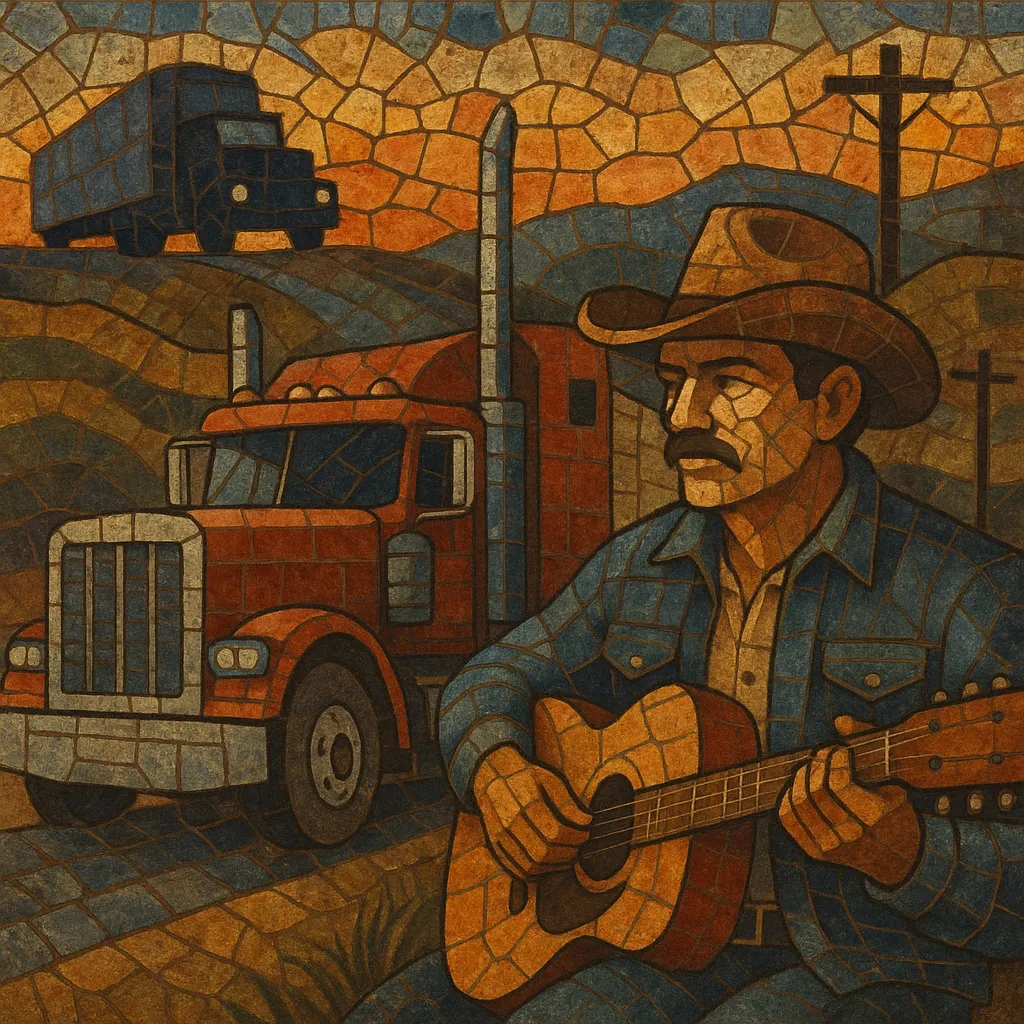
Truck driving country is a narrative-driven subgenre of country music centered on the lives, lore, and language of long‑haul truckers. It pairs road‑ready, uptempo grooves with twangy Telecaster guitars, pedal steel, and baritone storytelling to evoke the relentless motion of the interstate and the camaraderie of CB radio culture.
The style ranges from hard‑charging highway anthems to sentimental spoken recitations, often peppered with trucker slang ("10‑4," "hammer down," "Smokey," "double nickel"). Lyrically it celebrates work, independence, and the romance and hardship of life behind the wheel, becoming a soundtrack to the post‑Interstate era of American mobility.
The genre coalesced in the early 1960s as the U.S. Interstate Highway System transformed American travel and work. Dave Dudley’s 1963 hit “Six Days on the Road” is widely cited as the template: a punchy 4/4 beat, Bakersfield‑style Telecaster twang, and first‑person lyrics steeped in trucker life. Artists like Red Simpson, Red Sovine, Del Reeves, and Dick Curless quickly expanded the repertoire with songs about weigh stations, late‑night diners, CB chatter, and endless white lines.
Sonically, truck driving country drew on honky‑tonk grit and Bakersfield brightness—clean Fender tones, walking or two‑feel bass, and pedal steel ornaments—favoring tempos and grooves that suggested constant motion.
The 1970s brought a national CB radio craze and a wave of trucker media that turbocharged the style’s popularity. C.W. McCall’s “Convoy” (1975), Jerry Reed’s “East Bound and Down” (1977), and Red Sovine’s dramatic recitations (e.g., “Phantom 309,” “Teddy Bear”) bridged country charts and mainstream pop culture. Film and TV—Smokey and the Bandit, White Line Fever, and the series Movin’ On—cemented the trucker mythos in the American imagination.
As the CB fad faded, truck driving themes remained in mainstream country via anthems like Alabama’s “Roll On (Eighteen Wheeler)” and Kathy Mattea’s “Eighteen Wheels and a Dozen Roses.” The sound and imagery blended into contemporary country and country‑rock, while the core subgenre became more niche.
Periodic revivals (e.g., Canada’s The Road Hammers) and the broader resurgence of blue‑collar themes in modern country kept truck driving country’s DNA alive. Its celebration of work, mobility, and plainspoken storytelling continues to inform contemporary country, bro‑country, and country rap, while classic cuts remain staples of road playlists.

